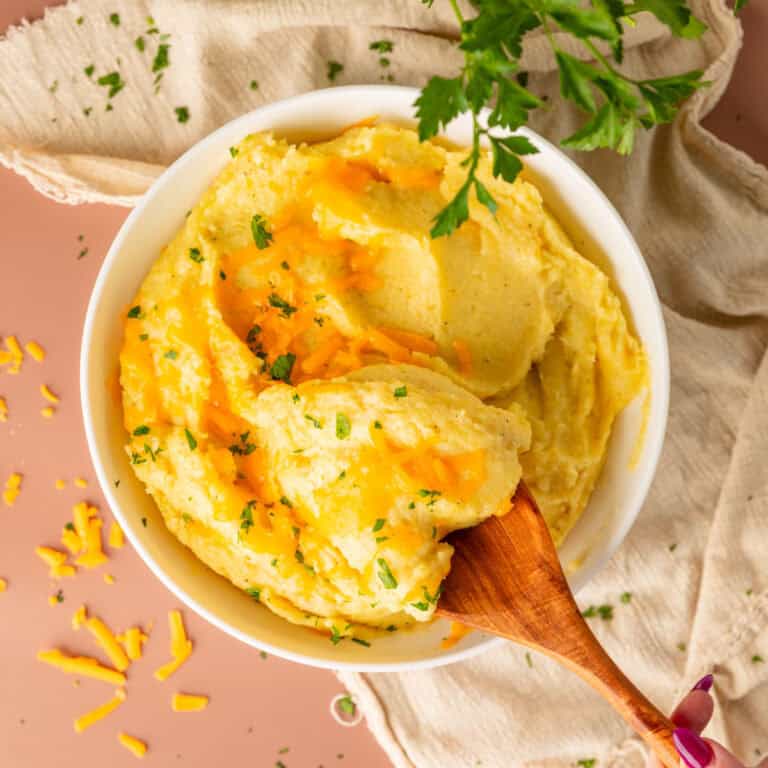
This post is sponsored by Cache Valley® Creamery. All thoughts and opinions are my own.
Complete a delicious family meal with these Cheesy Mashed Potatoes made with gouda and sharp cheddar cheese. I’m sharing my professional tips and tricks to ensure you have the BEST mashed potatoes no matter the occasion.
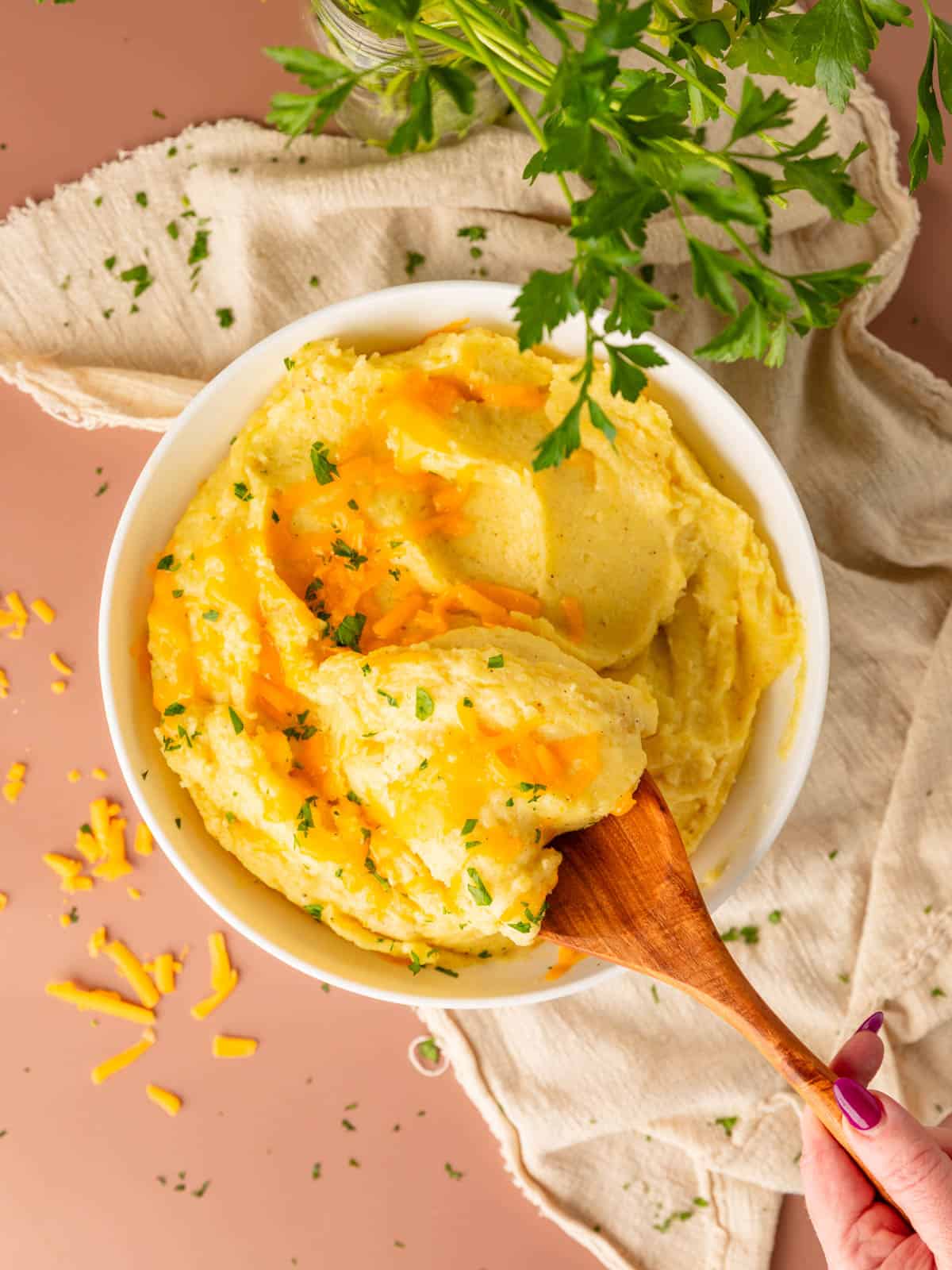
I can’t wait for you all to try these Mashed Potatoes with Cheddar and Gouda—they’ve quickly become my favorite. They’re buttery and cheesy, yet still light and fluffy.
These mashed potatoes remind me of the filling inside a twice-baked potato (arguably the best part!) and make a perfect addition to your holiday menu.
Jump to:
- 🥔 What Potatoes Make the Best Mashed Potatoes?
- 🧀 What You Need to Make Cheesy Mashed Potatoes
- 👩🏻🍳 The Best Way to Cook Potatoes for Mashing
- 📘 Glossary
- 🥣 How to Make Mashed Potatoes with Cheddar and Gouda
- ‼️ Mistakes to Avoid When Making Mashed Potatoes
- ❤️ My Favorite Potato Ricer
- 💭Frequently Asked Questions
- 🧀 More Cheesy Side Dishes for the Holidays
- 📱 #ScarlatiFamilyKitchen
- 📖 Recipe
- 💬 Comments
🥔 What Potatoes Make the Best Mashed Potatoes?
Choosing the right potatoes is key to making the best mashed potatoes. Avoid waxy potatoes like red or fingerling, and opt for a starchy variety like Yukon Gold, Yellow, Russet, or, ideally, a combination of both.
Personally, I prefer Yukon Gold or yellow potatoes, which offer a naturally creamy texture and buttery flavor that work perfectly with these cheesy mashed potatoes.
🧀 What You Need to Make Cheesy Mashed Potatoes
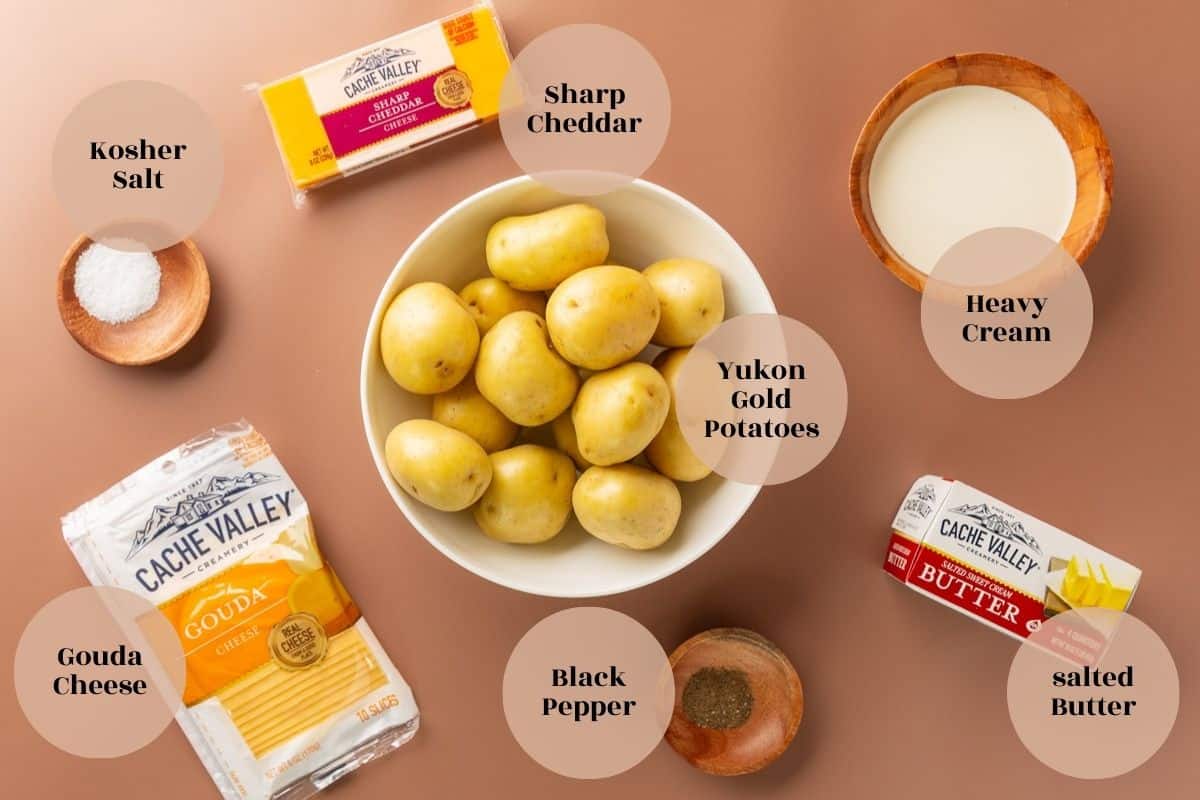
- Potatoes – I used yellow potatoes for this recipe, but Yukon Gold or Russet potatoes will work great. Using ½ yellow and ½ baking potatoes gives the best balance of starchy and creamy textures.
- Cheese - After testing different combinations, the Cache Valley® sharp cheddar and Cache Valley® gouda slices were the clear winners. Cheddar brings a tangy bite, while gouda adds a subtle, nutty sweetness.
- Cream - My top choice for mashed potatoes is heavy cream instead of half-and-half or milk. It enhanced the butter and cheese flavor the most, however, the others will work as substitutes.
- Butter - Cache Valley® salted butter adds a rich flavor and creamy texture while melting it first helps with absorption.
- Seasonings - I’ve kept it simple with salt and pepper. For variety, you could add fresh thyme, rosemary, or a couple of smashed garlic cloves when heating the cream and butter.
👩🏻🍳 The Best Way to Cook Potatoes for Mashing
Cooking methods for mashed potatoes vary, each with its pros and cons. Here are some tips for each.
- Steaming adds just enough moisture, avoiding the waterlogging that can happen from boiling. For uniform sizes, keep potatoes whole. Cut larger ones if needed for even cooking. Start them with cold water under a steamer basket in a pot and cook them covered. Cook for 20-30 minutes until they are fork-tender.
- Baking works well but can dry the potatoes slightly, a texture better suited to gnocchi. If you prefer this hands-off approach, pierce the potatoes with a knife to release steam. Bake at 400˚F for 45-60 minutes until fork tender.
- Boiling is convenient but keep the potatoes whole to avoid water absorption, which can break down the starches. If you cut them up, they may absorb too much water, affecting the starch levels. Make sure to start them in cold water, to prevent uneven cooking. Boil for 15-30 minutes until fork-tender.
- Microwaving is ideal for small portions; it’s quick and efficient but be cautious not to overcook. It can be difficult for larger portions because it can lead to uneven cooking and multiple rounds of cooking. For microwaving, pierce the potatoes with a knife to release steam. Cook for 5–15 minutes until fork-tender.
📘 Glossary
If you don't recognize a tool or skill I mentioned, you can look it up in my Glossary of Cooking Terms and Definitions for more information!
🥣 How to Make Mashed Potatoes with Cheddar and Gouda
- Cook Potatoes & Prep Cheese - First, you cook your potatoes using whichever method you prefer. While the potatoes cook, shred the sharp cheddar into the bottom of your serving bowl, tearing the gouda slices into small pieces on top. Add salt and pepper, then mix them gently.
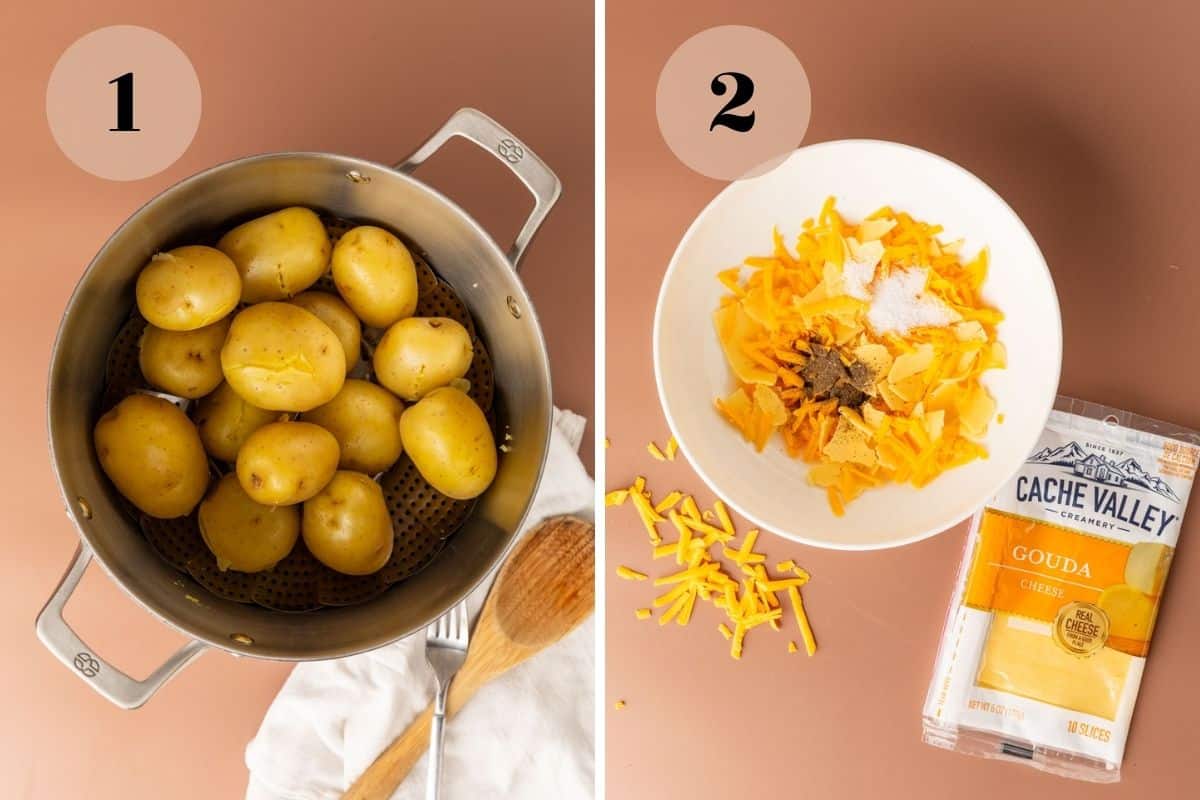
- Rice or Mash - A potato ricer or food mill creates the smoothest texture without requiring peeling. A potato masher is fine too—just be careful not to over-mash, as it can make the potatoes gluey.
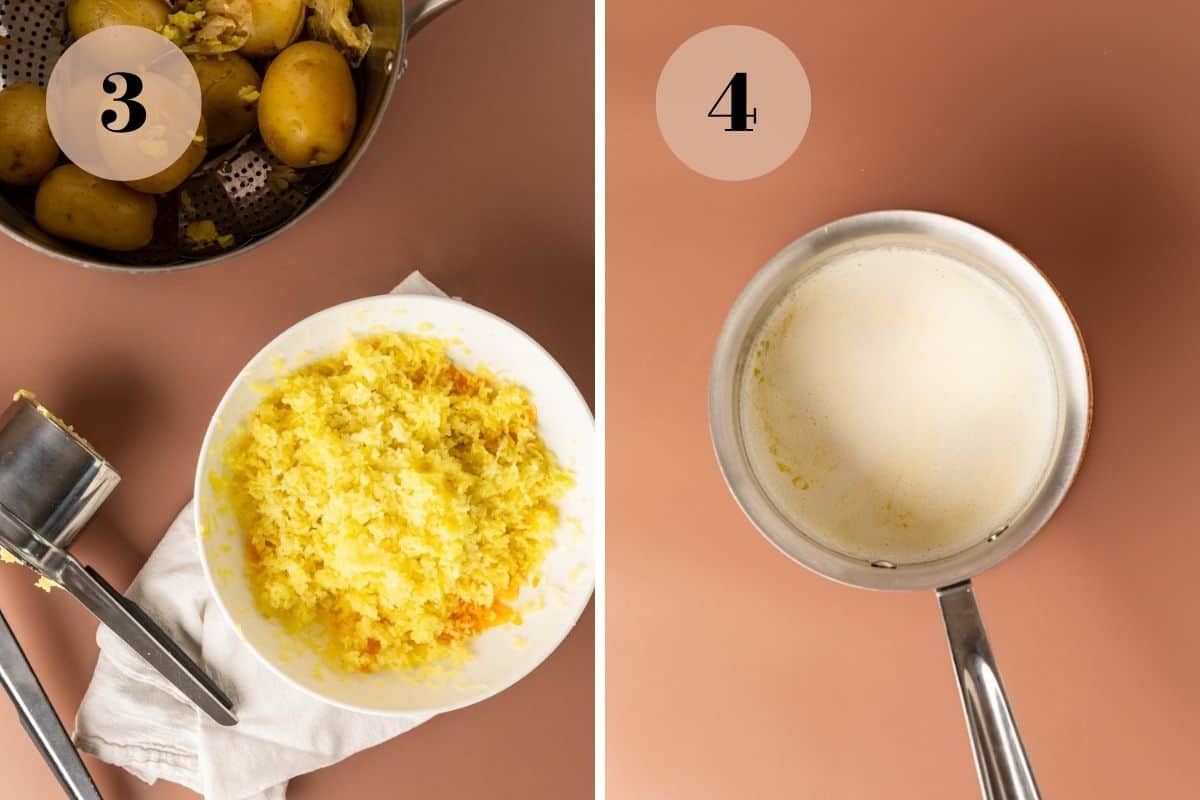
- Mix and Finish - Heat the butter and cream over medium-low heat until warm (but don’t let it boil!). Pour the warmed cream mixture over the potatoes and fold them gently with a spatula. Top with extra sharp cheddar and then you are ready to go!
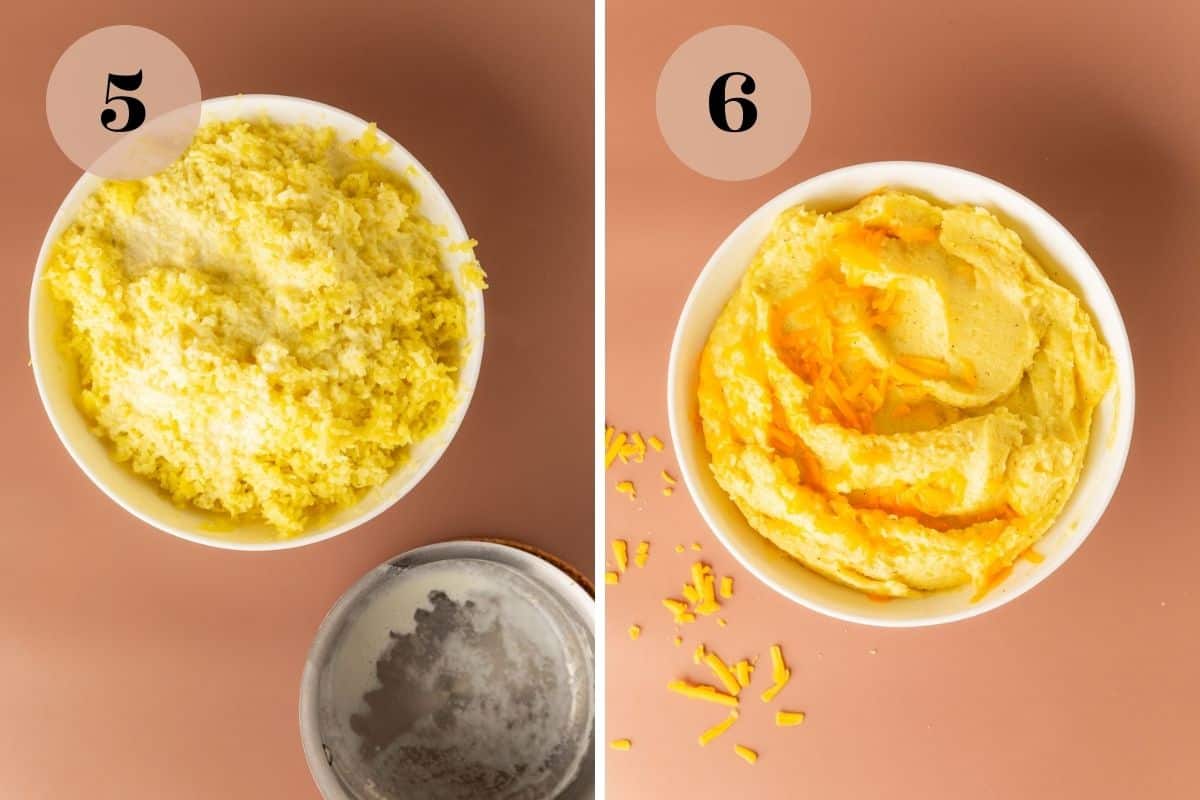
‼️ Mistakes to Avoid When Making Mashed Potatoes
- Cooking Potatoes Incorrectly – Undercooked potatoes won’t mash well, while overcooked ones may release too much starch, making them gummy.
- Over-Mashing – Processing through a ricer is ideal, as it aerates potatoes without releasing excess starch. If you use a stand mixer, proceed with caution to avoid dense, gluey potatoes.
- Using Cold Ingredients – Always add warm butter and cream to prevent extra stirring, which can make the potatoes dense. The potatoes will absorb warm ingredients faster, requiring less handling.
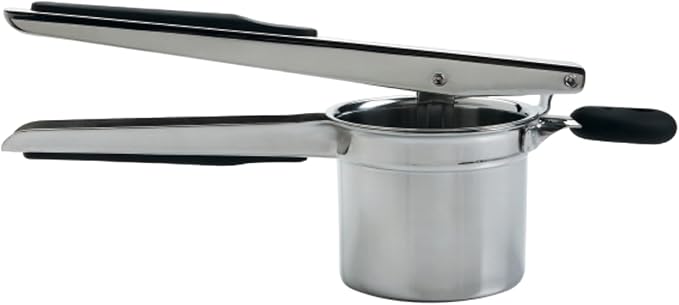
❤️ My Favorite Potato Ricer
This is the potato ricer I use and it gives fluffy mashed potatoes without having to peel them!
Below is an affiliate link and I may be compensated (at no cost to you)
if you purchase after clicking on it.
💭Frequently Asked Questions
Estimate ⅓ to ½ pounds of raw, unpeeled potatoes per person. If serving a potato-loving crowd or for holiday meals, aim for closer to ½ pound.
Absolutely! Prepare them up to 48 hours in advance. For stovetop reheating, stir occasionally over low heat. If using a slow cooker, set it to the warm function or lowest heat. To prevent them from drying out, you can add extra melted butter with any of these methods.
Medium or mild cheddar and colby jack can be substituted for the sharp cheddar. Swiss, muenster, or havarti can be used instead of gouda.
🧀 More Cheesy Side Dishes for the Holidays
📖 Recipe
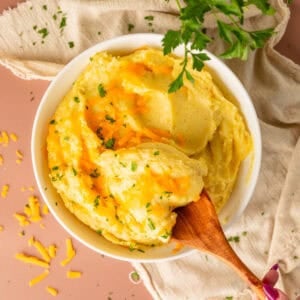
Cheesy Mashed Potatoes with Gouda and Cheddar
Equipment
- Potato Ricer (affiliate link)
Ingredients
- 3 pounds Yukon Gold potatoes
- 3 ounces Cache Valley® sharp cheddar cheese, plus extra for topping
- 5 pieces Cache Valley® gouda slices
- ¾ cup heavy cream
- 6 Tablespoons Cache Valley® salted butter
- 1 ¼ teaspoons kosher salt
- ½ teaspoon black pepper
Instructions
- Cook the Potatoes: First, add the potatoes to a steamer basket in a large pot and add just enough cold water to come right under the basket. Cover with the pot with a lid and place on the stovetop over medium-high heat. Cook for 20-30 minutes until the potatoes are fork-tender. (Be careful not to overcook the potatoes so the starches don’t break down too much.)
- Prep the Cheese: In a large serving bowl, shred the sharp cheddar and tear the gouda into small pieces. Add the salt and pepper and gently mix everything, spreading it out evenly over the bottom of the dish.
- Rice the Potatoes: Once potatoes are cooked, use a potato ricer to press them directly into the bowl over the cheese mixture (no need to peel them!).
- Heat the Cream and Butter: Heat the cream with the butter in a small pot over medium-low heat on the stovetop. Do not let the mixture bubble, you just want the butter to melt and the cream to warm.
- Combine and Serve: Pour the hot cream mixture over the potatoes and let it sit for 30 seconds. Gently fold everything together and add extra cheddar on top, if desired.
Notes
- Potatoes - Yukon Gold, yellow or Russet potatoes can be used. You can also use a combination.
- Cream - Half and half or milk can be substituted but will be less creamy and rich.
- Cheese - Colby jack or medium or mild cheddar cheese can be substituted for the sharp cheddar. Havarti, muenster, or swiss can be substituted for the gouda.
- Cooking - Steaming gives you the best texture, but you can bake, boil or microwave your potatoes. See the information in my post regarding the pros and cons of each method.
- Make-Ahead - These potatoes can be made 2 days before. For stovetop reheating, stir occasionally over low heat. If using a slow cooker, set it to the warm function or lowest heat. You can also bake in the oven at 350˚F for 30 minutes. Add extra melted butter to prevent the potatoes from drying out.
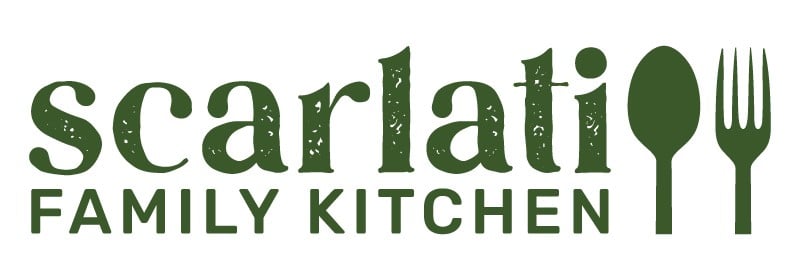
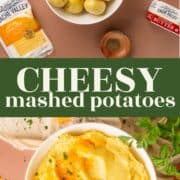
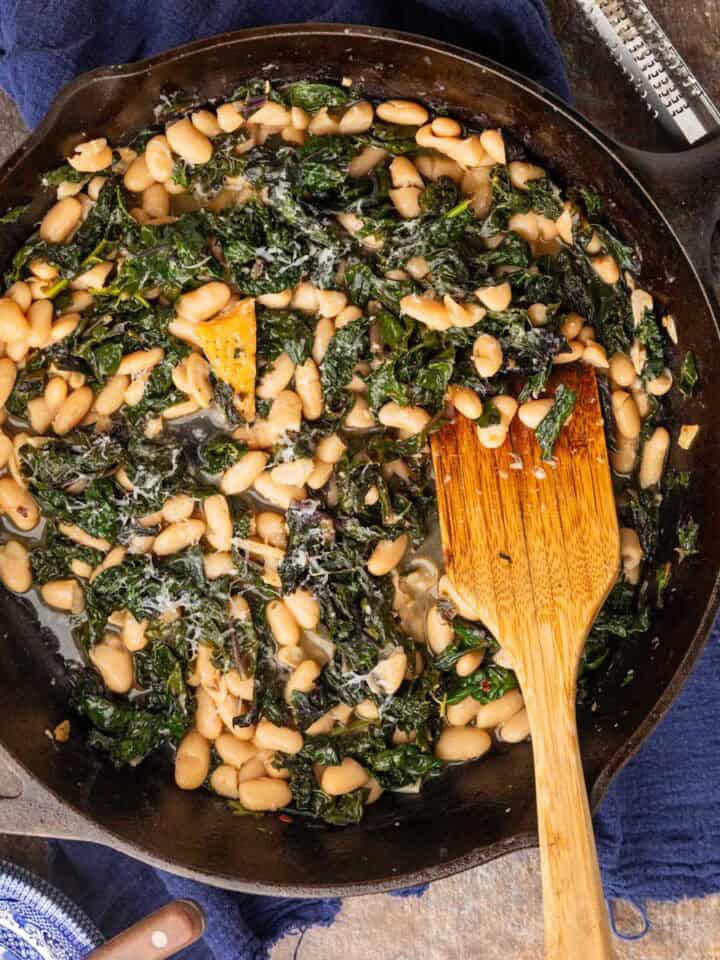
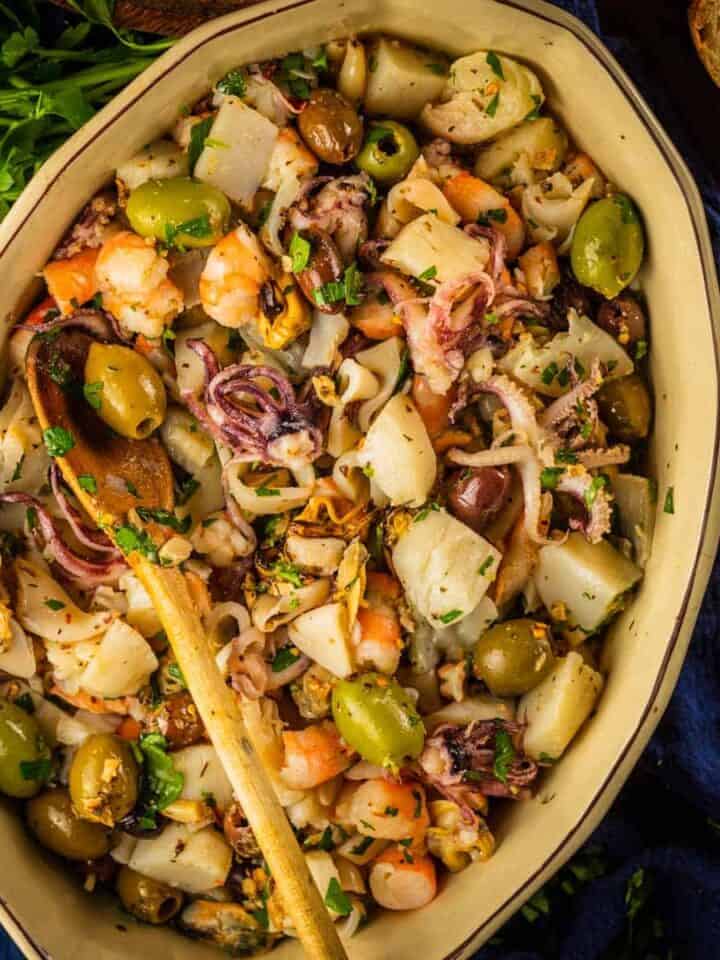
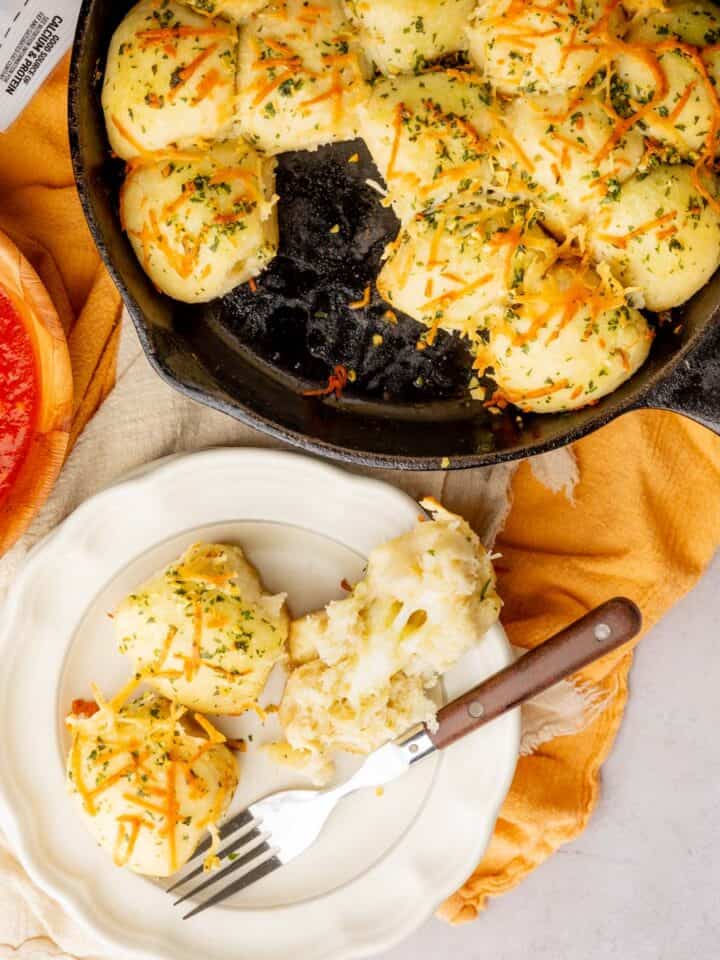
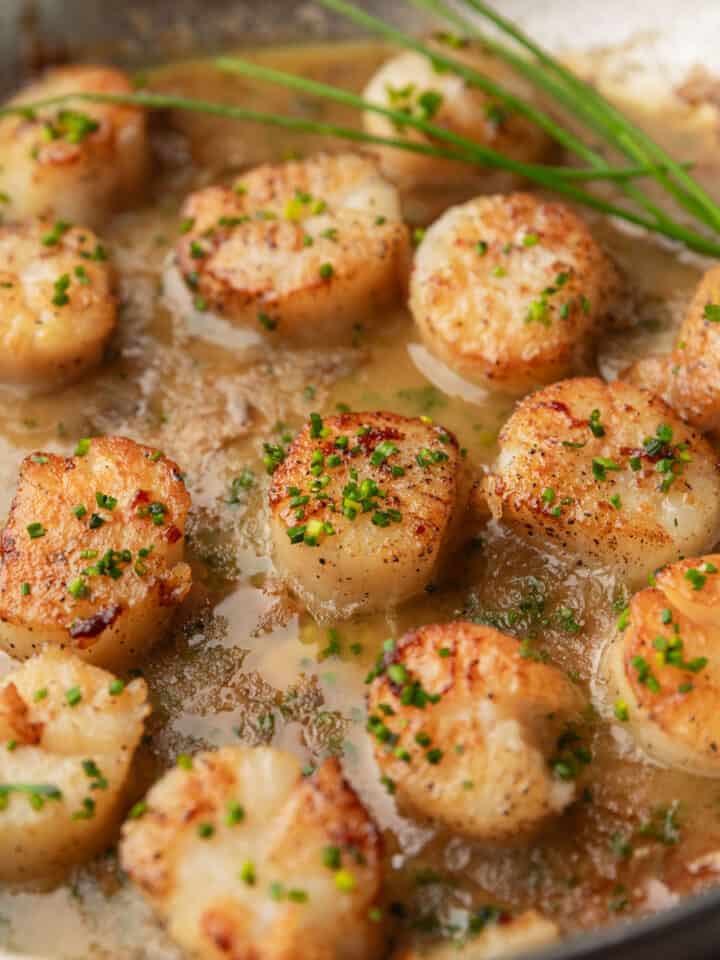
Comments
No Comments